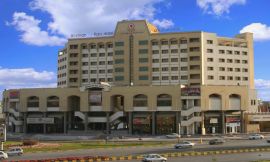
General Information
Kerman was founded as a defensive outpost, with the name Veh-Ardashir, by Ardashir I, founder of the Sasanian Empire, in the 3rd century AD. After the Battle of Nahāvand in 642, the city came under Muslim rule.
At first the city's relative isolation allowed Kharijites and Zoroastrians to thrive there, but the Kharijites were wiped out in 698, and the population was mostly Muslim by 725. Already in the eighth century the city was famous for its manufacture of cashmere wool shawls and other textiles. The Abbasid Caliphate's authority over the region was weak, and power passed in the tenth century to the Buyid dynasty, which maintained control even when the region and city fell to Mahmud of Ghazni in the late tenth century. The name Kerman was adopted at some point in the tenth century.
Based on Wikipedia, Kerman is located on a high margin of Kavir-e Lut (Lut Desert) in the south-central part of Iran. The city is surrounded by mountains. Kerman is also located along the Saheb Al Zman mountain. The city is 1,755 m (5,758 ft) above sea level, making it third in elevation among provincial capitals in Iran. Winter brings very cold nights to Kerman. Mountains in the south and southeast Jftan Joopar and Plvar and Kerman have snow all year round. Kerman is located at latitude 30.29 and longitude 57.06.
Get in and around
Kerman International Airport (KER) has regular flights to some major and smaller cities in Iran and some foreign cities.
Freeways connect the city to Yazd (300 km), Zahedan, Bandar Abbas (600 km), Birjand and Shiraz (600 km), Mashhad (1,200) km.
Kerman is well connected to most parts of the country. Daily bus is availble from Tehran and some major cities.
Kerman is connected to the whole railway network of Iran. It is connected to Yazd and Zahedan.
Top sights & Things to do
When to visit?
Kerman has a desert climate. During the year, there is virtually no rainfall. This climate is considered to be BWk according to the Köppen-Geiger climate classification. The average annual temperature in Kerman is 16.0 °C. Precipitation here averages 153 mm. The driest month is June, with 0 mm of rainfall. Most of the precipitation here falls in March, averaging 33 mm. The warmest month of the year is July, with an average temperature of 27.2 °C. January is the coldest month, with temperatures averaging 4.7 °C. The difference in precipitation between the driest month and the wettest month is 33 mm. Throughout the year, temperatures vary by 22.5 °C.
| Jan | Feb | Mar | Apr | May | Jun | Jul | Aug | Sep | Oct | Nov | Dec | |
| High/Low temperatures |
12°
-3°
|
15°
-1°
|
19°
4°
|
25°
8°
|
30°
13°
|
35°
16°
|
36°
18°
|
34°
15°
|
32°
11°
|
26°
6°
|
20°
0°
|
15°
-3°
|
|---|---|---|---|---|---|---|---|---|---|---|---|---|
| Chance of precipitation |
9%
|
12%
|
12%
|
7%
|
3%
|
1%
|
1%
|
0%
|
0%
|
1%
|
3%
|
5%
|






